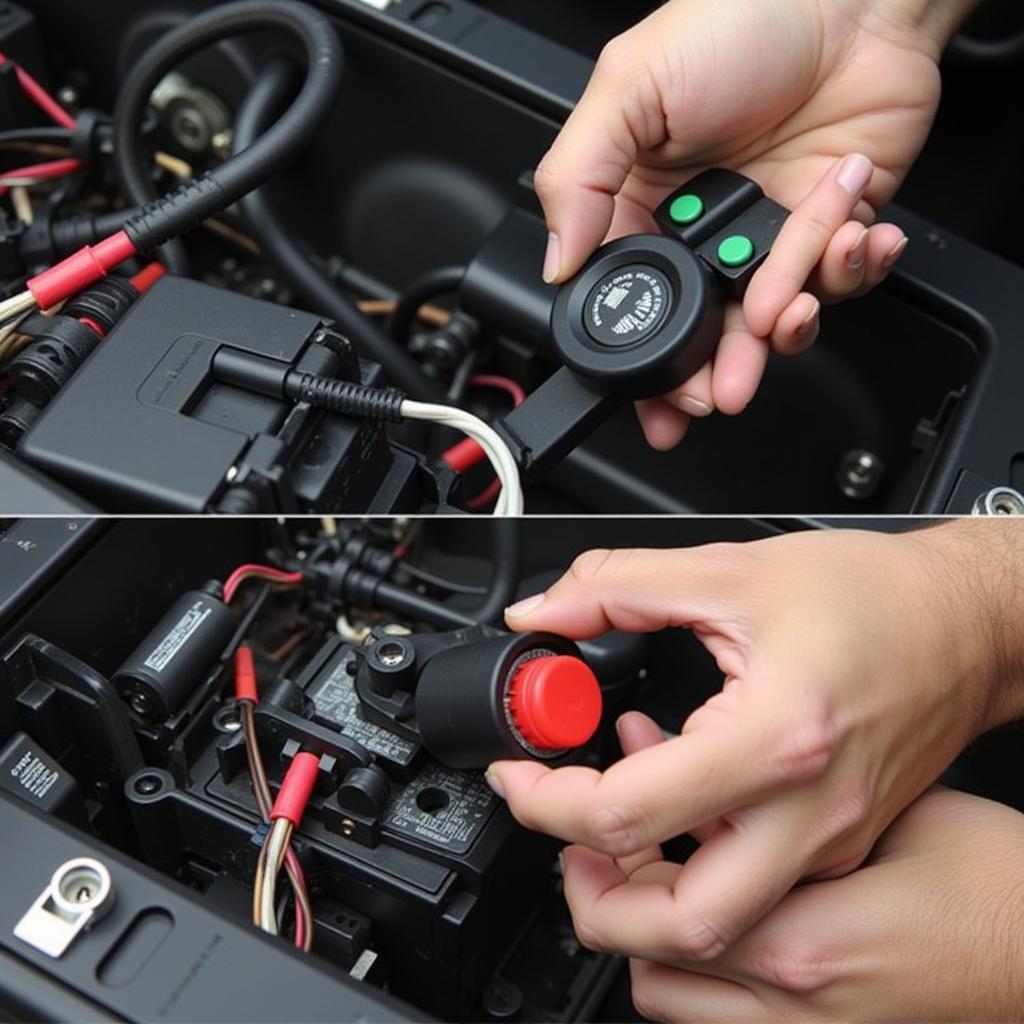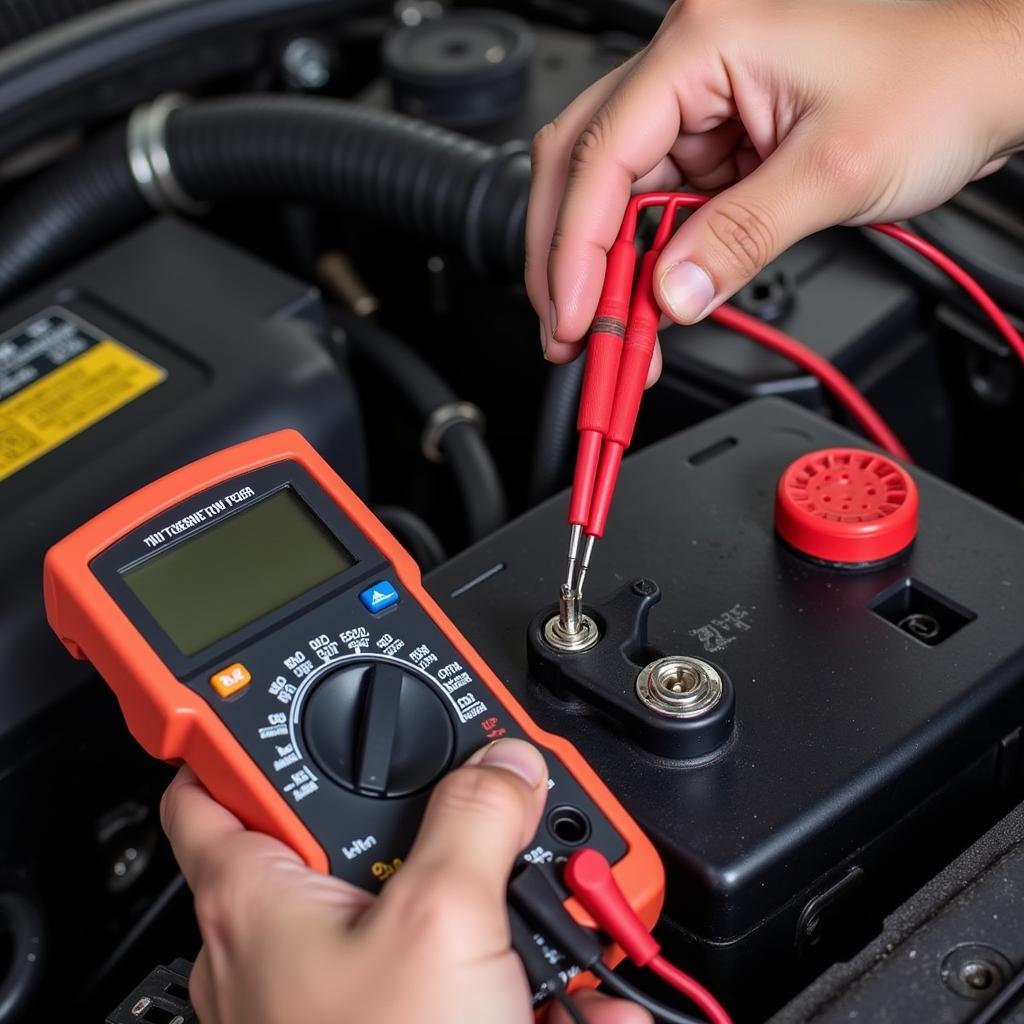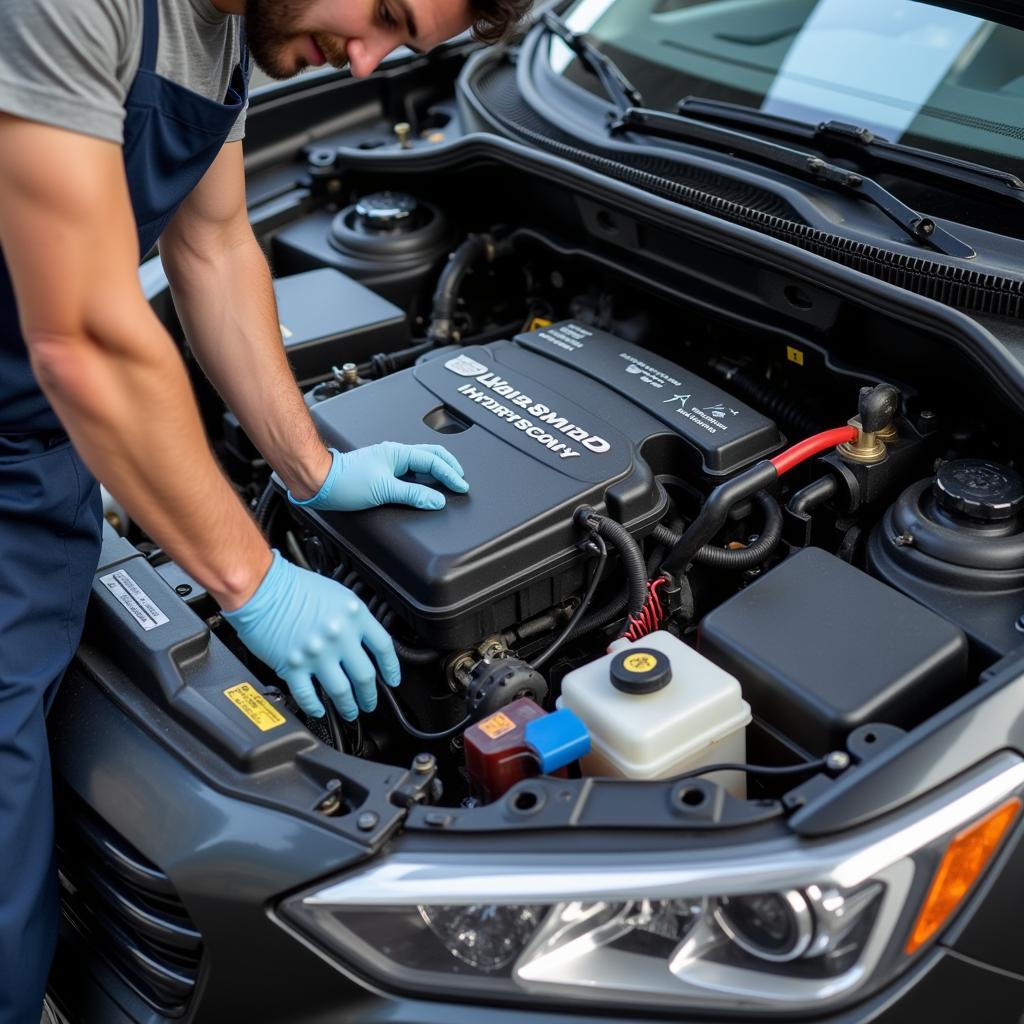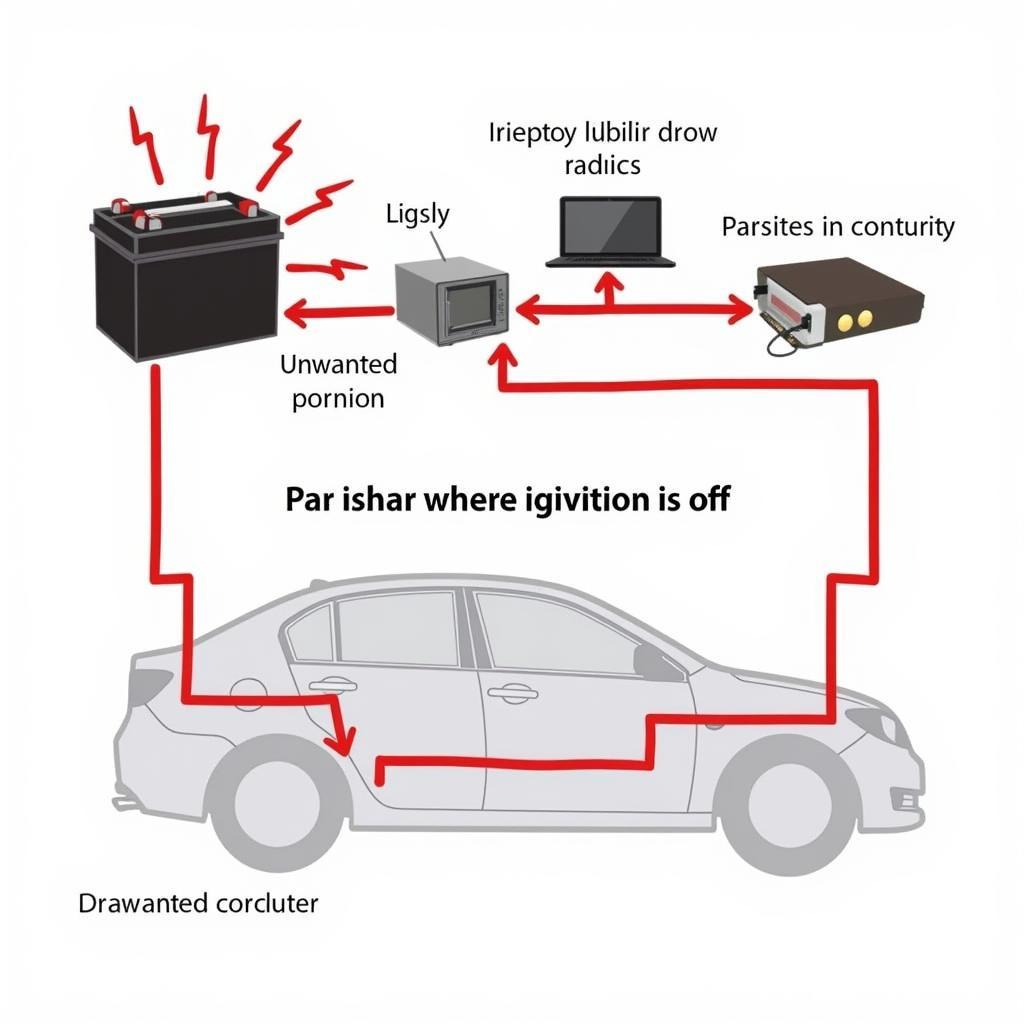A brake system warning light illuminating while your car refuses to start can be a frustrating and concerning experience. This article delves into the potential reasons behind this issue, offering troubleshooting steps, diagnostic advice, and solutions for getting your car back on the road.
Understanding the Brake System Warning Light and Starting Problems
The brake system warning light can indicate several issues, from low brake fluid to more serious problems like a malfunctioning ABS system. Simultaneously, a car that won’t start can be attributed to various factors, including a dead battery, faulty starter, or even issues within the brake system itself. The intersection of these two problems can often point to a specific set of causes.
Common Causes of a Brake System Warning Light and Starting Issues
- Low Brake Fluid: This is the most common cause of the brake warning light. Low brake fluid can be due to leaks or worn brake pads. While it might not directly prevent the car from starting, severely low fluid can trigger safety mechanisms in some vehicles, preventing startup.
- Faulty Brake Light Switch: The brake light switch is integral to both the brake lights and, in some cars, the starting system. A malfunctioning switch can prevent the car from starting and trigger the brake warning light.
- Wiring Issues: Damaged or corroded wiring within the brake system can cause both the warning light and starting problems.
- Dead Battery: A dead or weak battery is a frequent culprit for a car not starting. While seemingly unrelated to the brake system, a drained battery can sometimes cause erratic dashboard light behavior, including the brake warning light illuminating.
- Faulty Starter: A failing starter motor will prevent the engine from cranking, leading to starting issues. This is usually unrelated to the brake system warning light, but both problems can occur simultaneously.
Diagnosing the Problem: A Step-by-Step Guide
- Check the Brake Fluid Level: Open the brake fluid reservoir and check the level. If it’s low, add brake fluid to the appropriate level.
- Inspect the Brake Light Switch: Locate the brake light switch (usually above the brake pedal). Check for any damage or loose connections. Test the switch by pressing the brake pedal; the brake lights should illuminate. If not, the switch may need replacing.
 Inspecting the Brake Light Switch
Inspecting the Brake Light Switch - Test the Battery: Use a multimeter to test the battery voltage. A reading below 12.6 volts indicates a weak or dead battery.
 Testing Car Battery Voltage with Multimeter
Testing Car Battery Voltage with Multimeter - Check Wiring and Connections: Visually inspect the wiring and connections related to the brake system and starter for any damage, corrosion, or loose connections.
Seeking Professional Help
If you’ve performed these checks and the problem persists, it’s best to consult a qualified automotive technician. They have the expertise and diagnostic tools to pinpoint the exact issue and perform the necessary repairs.
Remote Diagnostics and Programming: A Modern Solution
Modern technology offers remote diagnostic and programming services. This allows technicians to access your vehicle’s computer system remotely, diagnose the problem, and even perform software updates or programming fixes without physical access to the car. This can save time and potentially reduce repair costs.
“Remote diagnostics offer a significant advantage in quickly identifying and resolving issues, especially with complex electronic systems like those found in modern brakes.” – John Smith, Automotive Systems Engineer
“In many cases, a simple software update via remote programming can resolve seemingly complex issues, saving the car owner both time and money.” – Jane Doe, Senior Automotive Technician
Conclusion
A brake system warning light combined with starting problems can stem from various causes. By understanding the potential issues and following the diagnostic steps outlined above, you can often identify the problem. However, if the issue persists, seeking professional assistance, including remote diagnostic services, is the best course of action to get your car safely back on the road.
FAQ
- Can a bad brake light switch prevent a car from starting? Yes, in some vehicles, a faulty brake light switch can interrupt the starting circuit.
- Will low brake fluid prevent a car from starting? In some cases, severely low brake fluid can activate safety mechanisms that prevent the car from starting.
- What should I do if my brake warning light is on and my car won’t start? Check the brake fluid level, inspect the brake light switch, and test the battery. If the problem persists, consult a mechanic.
- How can remote diagnostics help with brake system issues? Remote diagnostics allow technicians to access your car’s computer remotely to diagnose and potentially fix problems without physical access to the vehicle.
- Is it safe to drive with the brake warning light on? No, it’s unsafe to drive with the brake warning light illuminated. It indicates a potential problem with the braking system that needs immediate attention.
- What is the cost of remote diagnostics? The cost of remote diagnostics varies depending on the service provider and the complexity of the issue.
- Can remote programming fix a brake system problem? In some cases, a software update via remote programming can resolve brake system issues.



